A decade after Rio de Janeiro authorities closed it and began efforts to restore it, the once heavily polluted marshland of Duque de Caxias has become a thriving mangrove forest teeming with crabs, snails, fish and birds.
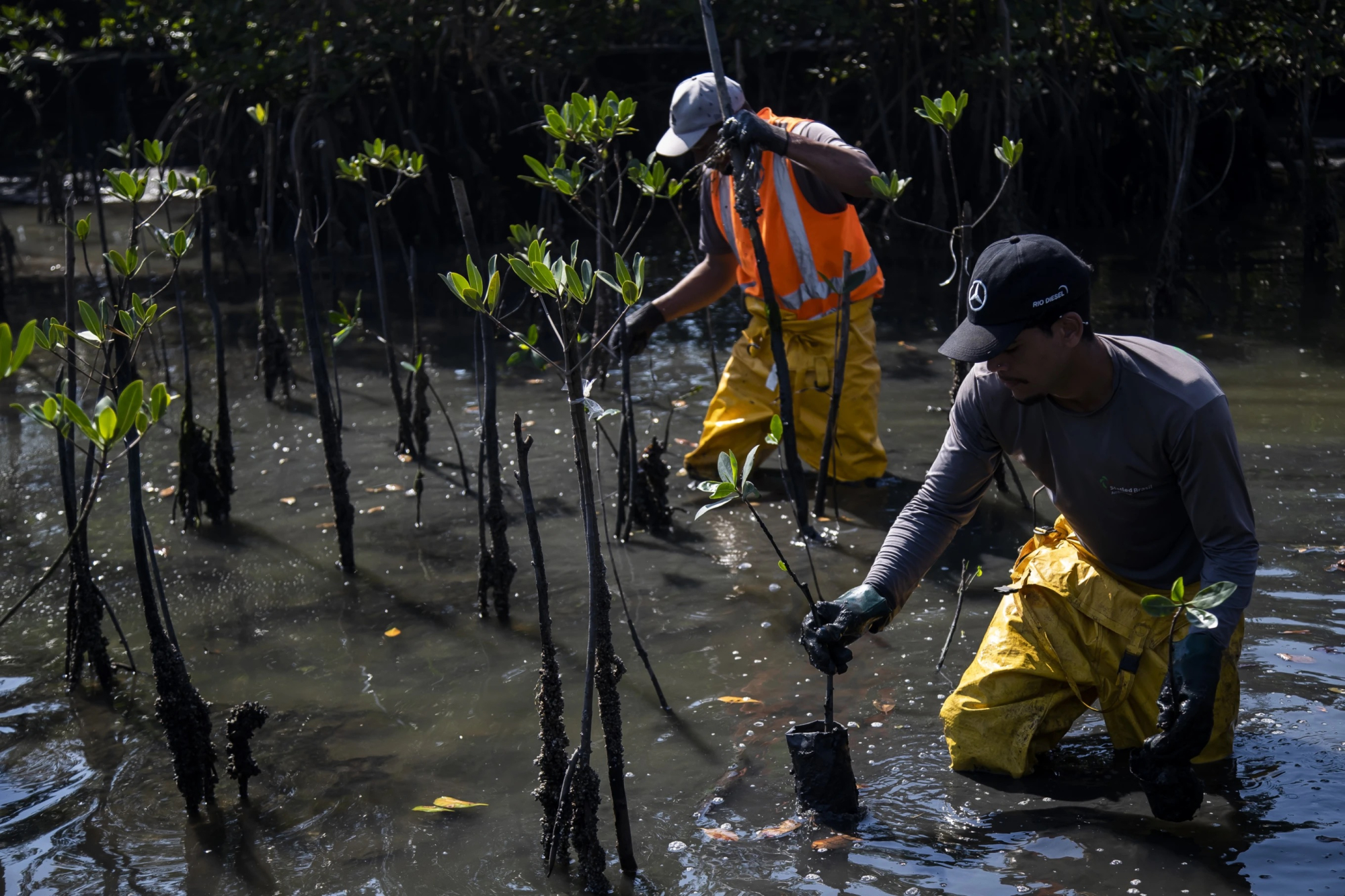
Workers plant seedlings in a restored mangrove forest that was once part of a landfill in Duque de Caxias, Brazil. Photo: AP
“If we didn’t say it was a landfill, people would think it was a farm. The only thing missing is the livestock,” joked Elias Gouveia, an engineer with Comlurb, the city’s waste collection agency. “This is an environmental lesson we have to learn: If we don’t pollute nature, it will heal itself.”
The former landfill sits right next to Guanabara Bay, a 140-square-mile (383-square-kilometer) area. Between the time the landfill operated between 1968 and 1996, some 80 million tons of trash were dumped into the area, polluting the bay and surrounding rivers with trash and foul-smelling runoff.
In 1996, the city began taking steps to limit pollution levels at the landfill, starting with treating leachate, a toxic byproduct. But trash continued to pile up until 2012, when the city officially closed it.
“When I got there, the mangroves were almost completely destroyed by leachate and garbage coming from Guanabara Bay,” recalls Mario Moscatelli, a biologist hired by the city in 1997.
The bay was once home to a thriving artisanal fishing industry and famous palm-fringed beaches. But it has become a dumping ground for waste from shipyards and two commercial ports. At low tide, household trash floats on vast “islands” of sewage and accumulated sediment.
An environmental project between Rio's Municipal Sanitation Company (COMLURB) and a private company has reclaimed 600,000 square meters of what was once the largest landfill in Latin America.
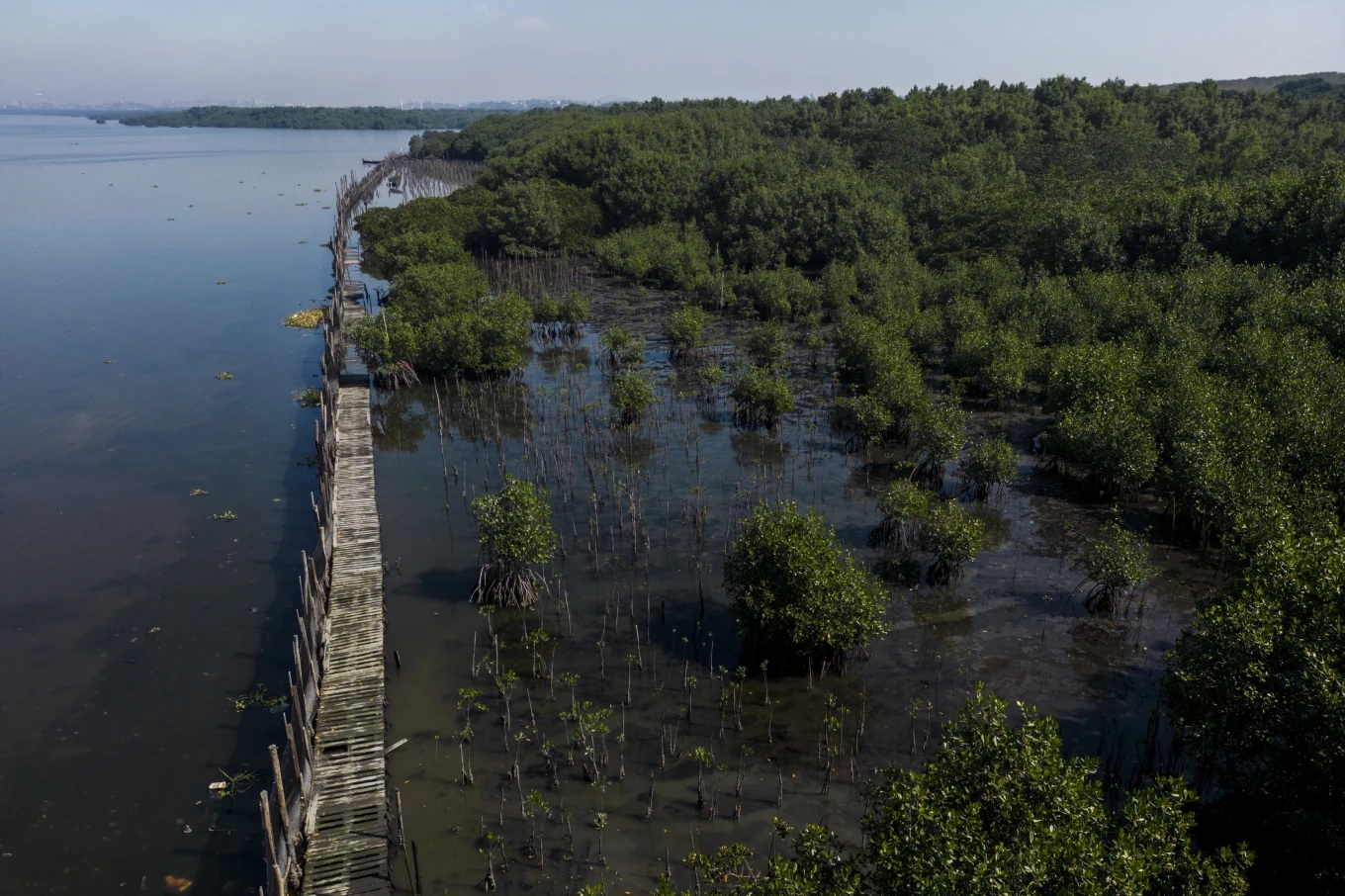
The trash has now become a lush mangrove forest. Photo: AP
The landfill, which once attracted hundreds of scavengers, was gradually covered in clay. Comlurb workers began clearing trash, building stormwater drainage systems, and replanting mangroves.
“Mangroves are of particular interest for environmental restoration because of their ability to capture and store large amounts of carbon dioxide (CO2) – the agent that is warming the planet,” explains Gouveia.
Mangroves can sequester more carbon in sediment than tropical rainforests, making them a great tool to combat climate change, experts say.
To help protect the rejuvenated mangroves from trash from nearby communities, where residents sometimes dumped trash into the river, the city used clay from the swamps to build a network of fences. To this day, Comlurb staff continue to maintain and reinforce the fences.
Comlurb and its private partner, Statled Brasil, have successfully restored about 60 hectares, six times the area they started with in the late 1990s. “We’ve turned the tide,” Gouveia says.
Mai Anh (according to AP)
Source













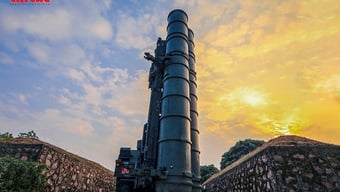

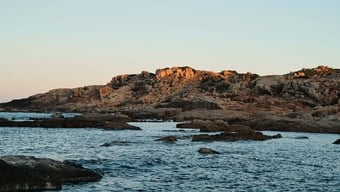
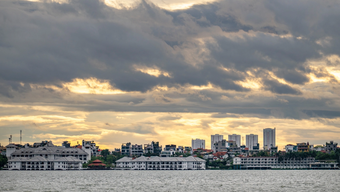


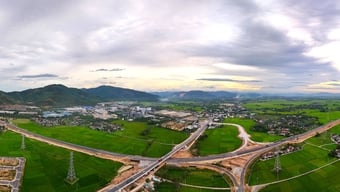



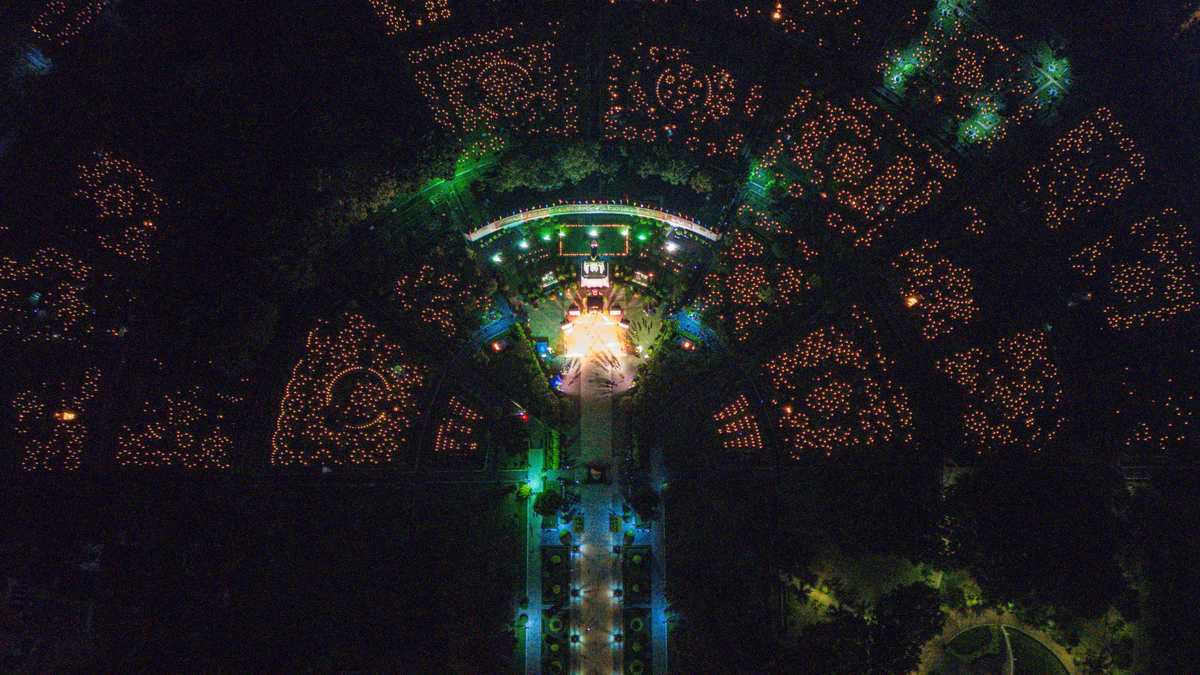




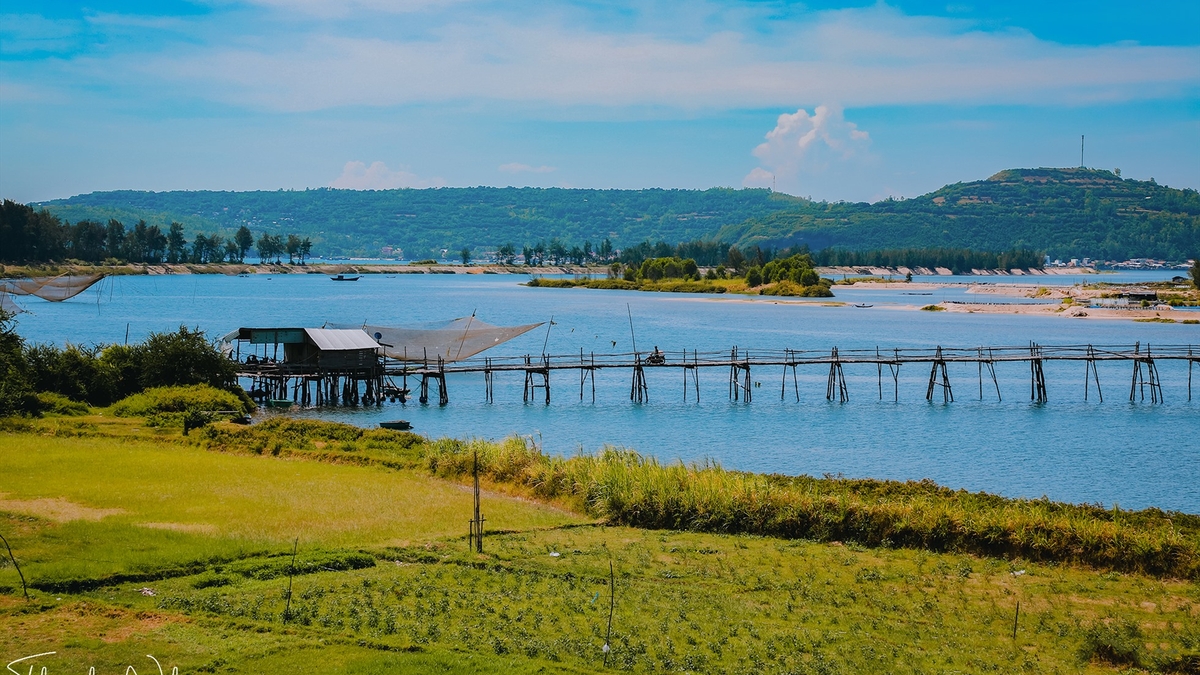


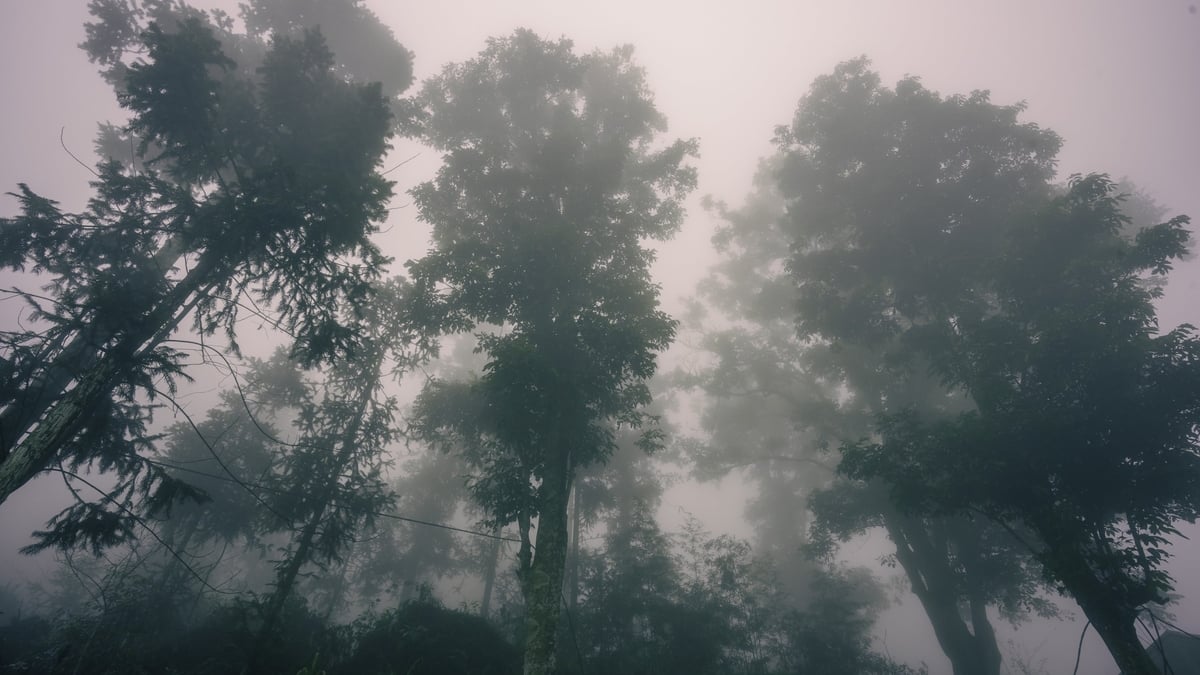
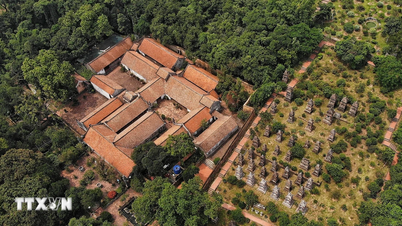








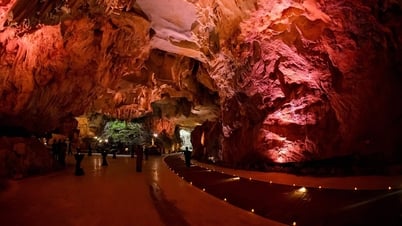
















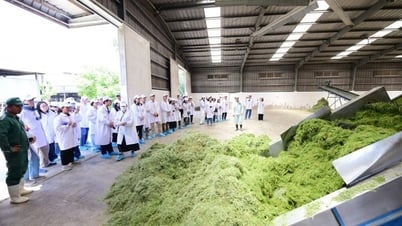
















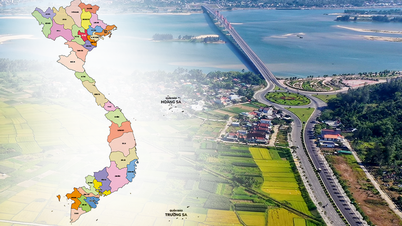






















Comment (0)